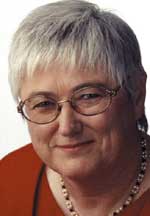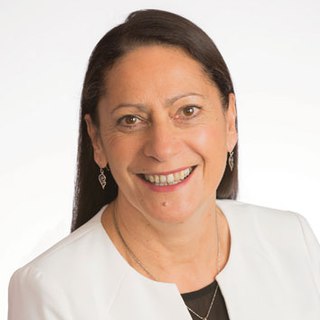
The prime minister of New Zealand is the head of government of New Zealand. The incumbent prime minister, Christopher Luxon, leader of the New Zealand National Party, took office on 27 November 2023.

The Lord President of the Council is the presiding officer of the Privy Council of the United Kingdom and the fourth of the Great Officers of State, ranking below the Lord High Treasurer but above the Lord Keeper of the Privy Seal. The Lord President usually attends and is responsible for chairing the meetings of the Privy Council, presenting business for the approval of the Sovereign. In the modern era, the incumbent is by convention always a member of one of the houses of Parliament, and the office is normally a Cabinet position.

The Cabinet of New Zealand is the New Zealand Government's body of senior ministers, accountable to the New Zealand Parliament. Cabinet meetings, chaired by the prime minister, occur once a week; in them, vital issues are discussed and government policy is formulated. Cabinet is also composed of a number of committees focused on specific areas of governance and policy. Though not established by any statute, Cabinet wields significant power within the New Zealand political system, with nearly all government bills it introduces in Parliament being enacted.

The Executive Council of New Zealand is the full group of "responsible advisers" to the governor-general, who advise on state and constitutional affairs. All government ministers must be appointed as executive councillors before they are appointed as ministers; therefore all members of Cabinet are also executive councillors. The governor-general signs a warrant of appointment for each member of the Executive Council, and separate warrants for each ministerial portfolio.
A cabinet secretary is usually a senior official who provides services and advice to a cabinet of ministers as part of the Cabinet Office. In many countries, the position can have considerably wider functions and powers, including general responsibility for the entire civil service.

The Privy Council Office is the central agency of the Government of Canada which acts as the secretariat to the Cabinet of Canada – a committee of the King's Privy Council for Canada – and provides non-partisan advice and support to the Canadian ministry, as well as leadership, coordination, and support to the departments and agencies of government.
In Canada, a deputy minister is the senior civil servant in a government organization, who acts as deputy head. Deputy ministers take political direction from a minister of the Crown, who is typically an elected member of Parliament and responsible for the department.

Richard John Barker is a New Zealand politician. He is a member of the Labour Party, and was a middle-ranking Cabinet minister in the Fifth Labour Government of New Zealand.

Marian Leslie Hobbs is a New Zealand politician who was a Labour Member of Parliament from 1996 to 2008. She was initially a list MP and then represented the Wellington Central electorate. She served as Minister for the Environment and, later, as one of two Assistant Speakers of the House of Representatives. She represented the Dunedin constituency of the Otago Regional Council from 2019 to 2021.

Ministers in the New Zealand Government are members of Parliament (MPs) who hold ministerial warrants from the Crown to perform certain functions of government. This includes formulating and implementing policies and advising the governor-general. Ministers collectively make up the executive branch of the New Zealand state. The governor-general is obliged to follow the advice of the prime minister on the appointment and dismissal of ministers.

The governor-general of New Zealand is the representative of the monarch of New Zealand, currently King Charles III. As the King is concurrently the monarch of 14 other Commonwealth realms and lives in the United Kingdom, he, on the advice of his New Zealand prime minister, appoints a governor-general to carry out his constitutional and ceremonial duties within the Realm of New Zealand.
The Department of the Prime Minister and Cabinet (PM&C) is an Australian Government public service central department of state with broad ranging responsibilities, primary of which is for intergovernmental and whole of government policy coordination and assisting the prime minister of Australia in managing the Cabinet of Australia. The PM&C was established in 1971 and traces its origins back to the Prime Minister's Department established in 1911.
The Department of the Prime Minister and Cabinet (DPMC) is the central public service department of New Zealand charged with providing support and advice to the governor-general, the prime minister and members of the Cabinet of New Zealand. The department is also charged with centrally leading New Zealand's "national security planning, which includes civil defence."

The New Zealand Government is the central government through which political authority is exercised in New Zealand. As in most other parliamentary democracies, the term "Government" refers chiefly to the executive branch, and more specifically to the collective ministry directing the executive. Based on the principle of responsible government, it operates within the framework that "the [King] reigns, but the government rules, so long as it has the support of the House of Representatives". The Cabinet Manual describes the main laws, rules and conventions affecting the conduct and operation of the Government.

Daniel Giles Sullivan was a New Zealand Member of Parliament, Cabinet Minister and Mayor of Christchurch.

Foss Shanahan was a New Zealand diplomat and public servant.

Munokoa Poto Williams is a New Zealand Labour Party politician and a member of Parliament. She was elected in a 2013 by-election and served as Minister of Conservation and Minister for Disability Issues in the Sixth Labour Government.

The Cabinet Manual is a government document in New Zealand which outlines the main laws, rules and constitutional conventions affecting the operation of the New Zealand Government. It has been described as providing "comprehensive, cohesive and clear advice on a number of key aspects of executive action. It is publicly available, and broadly accepted by a wide range of actors in NZ politics: politicians across the spectrum, officials, academics and the public."
The 2014 Special Honours in New Zealand was a Special Honours List dated 25 March 2014, recognising the service of the outgoing Secretary of the Cabinet and Clerk of the Executive Council.

Patrick Graham Millen was a diplomat and the New Zealand Secretary of the Cabinet and Clerk of the Executive Council from 1973 until 1987. In 1991 he was ennobled as a Knight by Pope John Paul II in recognition of his long and distinguished service to the Catholic Church and for his public service.
















